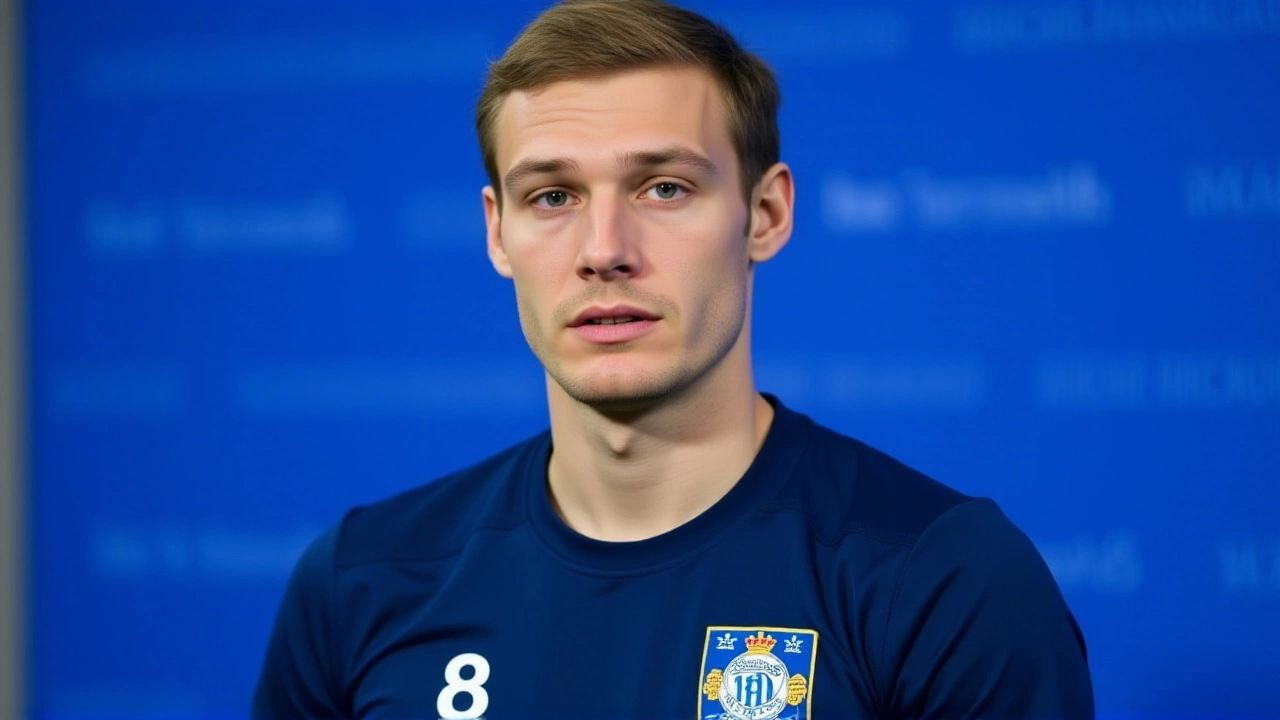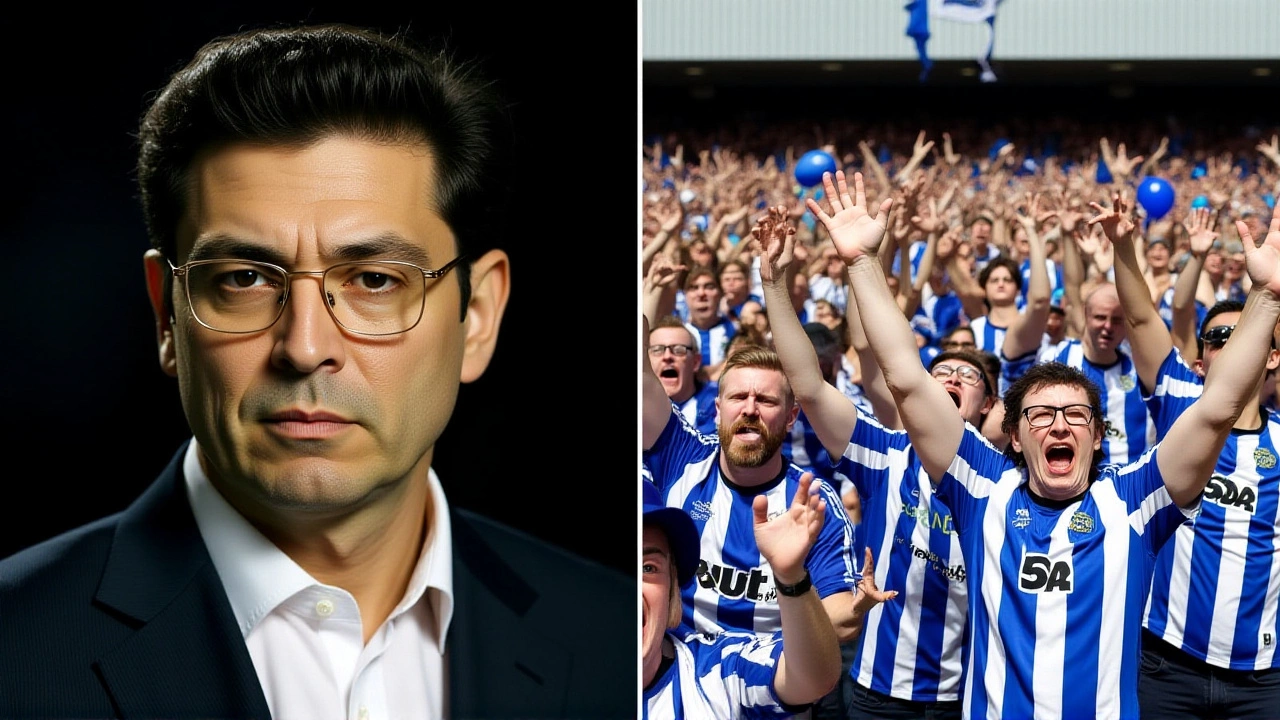When thousands of Sheffield Wednesday fans sat in silent protest during their October 23, 2025, home match against Middlesbrough, the eerie quiet of Hillsborough Stadium wasn’t just a lack of noise — it was a thunderclap of collective fury. The empty seats weren’t an accident. They were a statement. And it worked. Within weeks, Dejphon Chansiri, the Thai-born chairman whose decade-long reign had turned one of England’s oldest clubs into a financial disaster zone, was forced out. The club entered administration. And for the first time in 10 years, Sheffield Wednesday Football Club belonged to its fans — not a billionaire with a side business in tuna.
The Last Straw: A Stadium That Forgot How to Cheer
On Saturday, April 26, 2025, 25,000 fans marched through Hillsborough Park, waving banners that read ‘Sell the Club’ and ‘We’re Not Buying Your Lies.’ They gathered outside the stadium before the final home game of the season against Portsmouth, chanting until their voices cracked. It wasn’t just about losing games. It was about being treated like ATM machines. Players hadn’t been paid on time for five months. Staff wages vanished. The club’s own employees were told to chase unpaid invoices from Chansiri’s other companies — businesses tied to the Thai Union Group, the seafood empire owned by his father, Kraisorn Chansiri.By October, the Sheffield Wednesday Supporters Trust had confirmed what everyone already knew: 95% of fans had signed onto #EnoughisEnough. A survey by the Football Supporters Association showed the same number backed a full boycott. So they did. On October 23, the home end at Hillsborough Stadium — usually packed to its 39,732 capacity — held barely 8,000 fans. The away end, by contrast, was sold out. The silence was deafening. Journalists described it as ‘a funeral with a football match in the background.’
Chansiri’s Reign of Errors
It started with promises. Chansiri took over in 2015, promising to restore the club to its former glory. Instead, he turned it into a cautionary tale. In July 2020, the club was hit with a 12-point deduction — later reduced to six — for breaching EFL spending rules. That sent them plummeting to League One. Two seasons later, they clawed back to the Championship, only to be slapped with a transfer embargo until the end of 2026 for failing to pay HMRC. Twice.Chansiri didn’t just fail to invest. He demanded fans pay the club’s debts. In a now-infamous statement, he told supporters: ‘If you want this club to survive, you’ll have to cover what I won’t.’ He then refused to fund repairs to the north stand, which Sheffield City Council declared unsafe in 2022. It reopened in 2024 — after fans raised £120,000 in crowdfunding. Players’ wages? Paid late. Again. Staff? Laid off without notice. The club’s own financial statements, leaked in 2024, showed £11.4 million in liabilities — and zero net investment from Chansiri since 2019.
‘It became a proper chore to drag yourself to the ground,’ said Tom Scott, chair of the Supporters Trust. ‘You’d sit among protests, bad atmospheres, and performances that made you want to cry. He was embarrassing us regularly. Losing Darren Moore? That was the moment we stopped believing he cared.’

The Fan-Led Rebirth
Within 72 hours of the Middlesbrough boycott, Chansiri vanished from public view. On November 1, 2025, the club entered administration. His exit was quiet, but the aftermath was electric. Within 10 days, fans pledged over £2.3 million to stabilize the club. The Sheffield Wednesday Supporters Trust didn’t just raise cash — they designed a symbol. A badge, stitched onto the shorts of every player: ‘Paid for by the fans, for the club.’‘That badge wouldn’t have happened a few weeks ago,’ Scott said, smiling. ‘Under him, we were told to shut up and pay. Now? We’re the ones writing the rules.’
They’ve already secured a £1.5 million loan from the Supporters’ Trust to clear immediate debts. The transfer embargo is being appealed. And in a stunning reversal, the club’s legal team has begun exploring claims against Chansiri for mismanagement — potentially opening the door to civil litigation.
What’s Next? The Fan Forum and the Future
On Tuesday, November 4, 2025, over 1,200 fans packed into a community hall near Hillsborough for the first official forum since Chansiri’s exit. They didn’t just talk about tactics. They voted on a new board structure. They debated whether to become a Community Benefit Society — a model used by clubs like Barcelona and Borussia Dortmund — where ownership is shared among members, not shareholders.‘We’re not just saving a football club,’ said one fan, 68-year-old Margaret Hargreaves, who’s held a season ticket since 1972. ‘We’re building something that can’t be stolen again.’
The club’s new interim board, made up entirely of fan-elected representatives, plans to publish a full financial audit by January 2026. They’ve already rehired five staff members who were fired under Chansiri. And they’ve begun talks with local businesses to sponsor the club — not for logos on shirts, but for community projects.

Why This Matters Beyond Sheffield
This isn’t just a local story. It’s a blueprint. In an era where Premier League clubs are bought by oligarchs who treat them like luxury toys, Sheffield Wednesday proved that fans don’t have to wait for a billionaire to save them. Sometimes, they just need to stop buying tickets.Other clubs — including Leeds United and Port Vale — have already reached out to the Trust for advice. The message is clear: if you ignore your fans, they’ll find a way to take back control.
Frequently Asked Questions
How did fans manage to force Chansiri out without buying the club?
Fans didn’t need to buy the club — they just needed to make it unprofitable. By boycotting matches, refusing to buy merchandise, and publicly shaming Chansiri’s mismanagement, they triggered a financial collapse that forced the EFL to step in. Administration is a legal mechanism that removes owners who can’t meet obligations. The Trust’s coordinated pressure made it impossible for Chansiri to keep hiding the club’s debts.
What’s the significance of the ‘Paid for by the fans’ badge on player shorts?
It’s a symbolic act of ownership. For the first time in a decade, the club’s identity is no longer tied to a single owner’s vanity. The badge, designed and funded by supporters, publicly acknowledges that the club’s survival came from its community — not a billionaire’s charity. It’s a permanent reminder that fans are the true stakeholders, and it’s now part of the club’s official kit.
Could this model work for other struggling clubs?
Absolutely. Clubs like Leeds United and Wigan Athletic are watching closely. The key ingredients are unity, discipline, and timing. Sheffield Wednesday’s success came from a year-long campaign that escalated from protests to boycotts — all while staying legal. Other clubs could replicate this by forming official supporters’ trusts and coordinating financial pressure through collective action.
What’s the next step for Sheffield Wednesday’s ownership?
The Supporters Trust is exploring becoming a Community Benefit Society, which would allow fans to own shares with voting rights — not profit rights. This model, used by Barcelona and Borussia Dortmund, ensures no single investor can take control. A vote on the structure is expected by March 2026, with a formal transition planned for the 2026–27 season.
Why did Chansiri refuse to invest in the club?
Chansiri’s wealth was tied to Thai Union Group, a global seafood company. Financial records show he diverted club funds to cover losses in his other businesses, including a failed Thai property venture. He treated Sheffield Wednesday as a cash buffer — not an asset. When the club’s debts grew too large to hide, he stopped paying, hoping fans would bail him out. They didn’t. And that’s what broke him.
What happened to the planned blimp protest?
The blimp idea — meant to float over Hillsborough during the Steel City derby — was scrapped after Chansiri reportedly threatened legal action against the organizers. But the threat itself galvanized the movement. Instead of a blimp, fans used their bodies: empty seats, silent marches, and a stadium that refused to cheer. The real protest wasn’t in the sky. It was in the stands.
